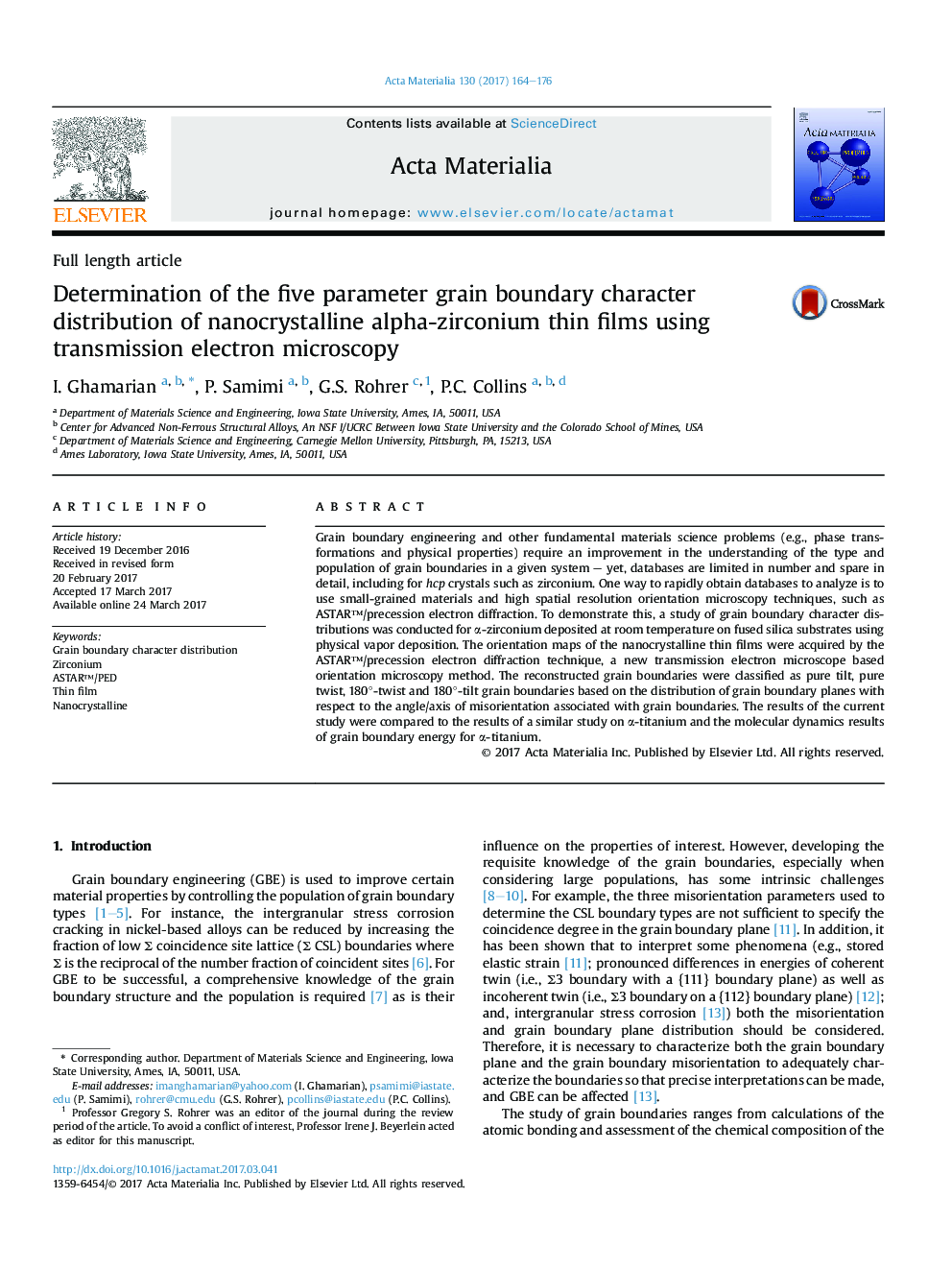| Article ID | Journal | Published Year | Pages | File Type |
|---|---|---|---|---|
| 5436028 | Acta Materialia | 2017 | 13 Pages |
Grain boundary engineering and other fundamental materials science problems (e.g., phase transformations and physical properties) require an improvement in the understanding of the type and population of grain boundaries in a given system - yet, databases are limited in number and spare in detail, including for hcp crystals such as zirconium. One way to rapidly obtain databases to analyze is to use small-grained materials and high spatial resolution orientation microscopy techniques, such as ASTARâ¢/precession electron diffraction. To demonstrate this, a study of grain boundary character distributions was conducted for α-zirconium deposited at room temperature on fused silica substrates using physical vapor deposition. The orientation maps of the nanocrystalline thin films were acquired by the ASTARâ¢/precession electron diffraction technique, a new transmission electron microscope based orientation microscopy method. The reconstructed grain boundaries were classified as pure tilt, pure twist, 180°-twist and 180°-tilt grain boundaries based on the distribution of grain boundary planes with respect to the angle/axis of misorientation associated with grain boundaries. The results of the current study were compared to the results of a similar study on α-titanium and the molecular dynamics results of grain boundary energy for α-titanium.
Graphical abstractDownload high-res image (334KB)Download full-size image
